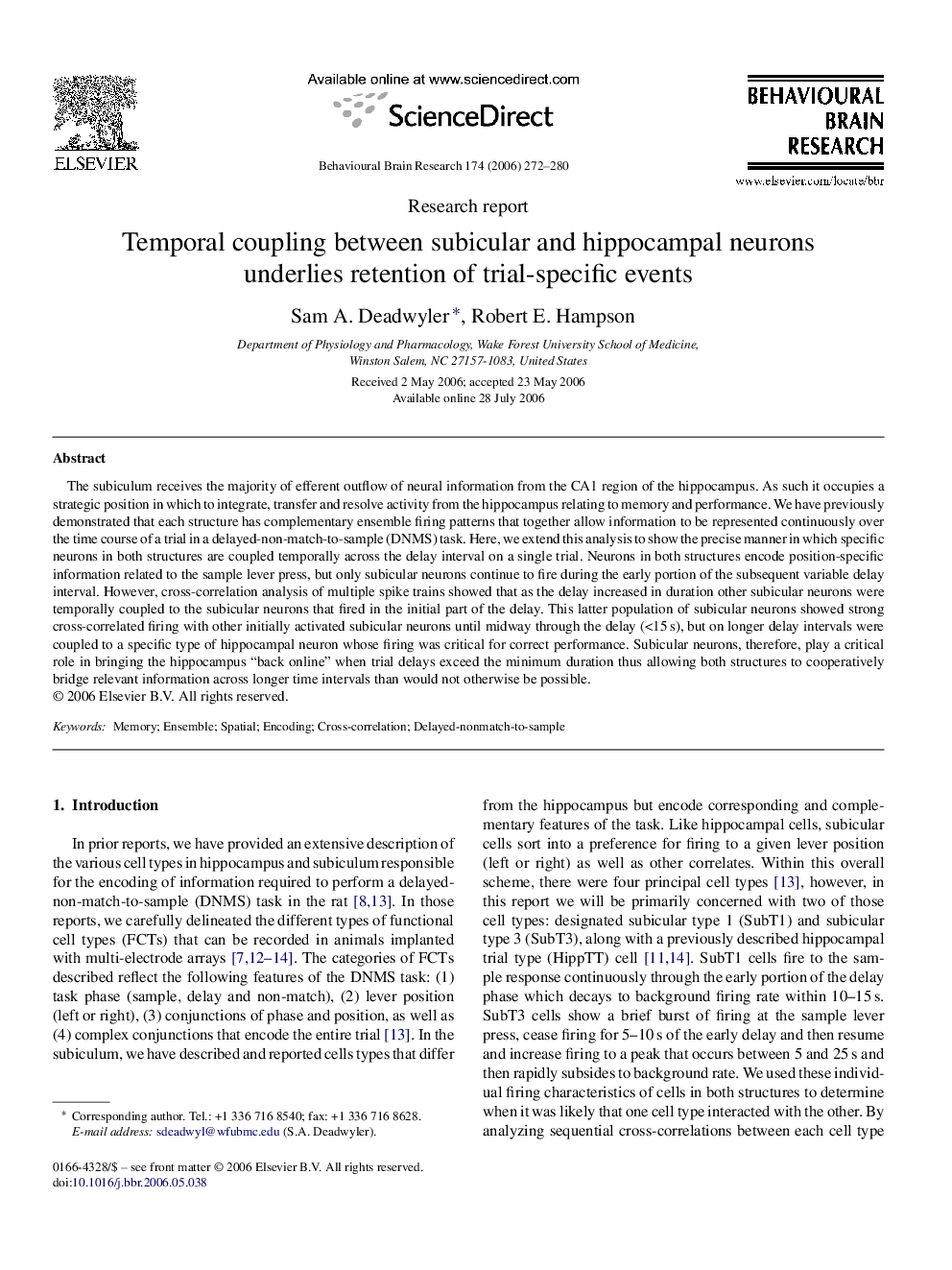| Article ID | Journal | Published Year | Pages | File Type |
|---|---|---|---|---|
| 4316007 | Behavioural Brain Research | 2006 | 9 Pages |
The subiculum receives the majority of efferent outflow of neural information from the CA1 region of the hippocampus. As such it occupies a strategic position in which to integrate, transfer and resolve activity from the hippocampus relating to memory and performance. We have previously demonstrated that each structure has complementary ensemble firing patterns that together allow information to be represented continuously over the time course of a trial in a delayed-non-match-to-sample (DNMS) task. Here, we extend this analysis to show the precise manner in which specific neurons in both structures are coupled temporally across the delay interval on a single trial. Neurons in both structures encode position-specific information related to the sample lever press, but only subicular neurons continue to fire during the early portion of the subsequent variable delay interval. However, cross-correlation analysis of multiple spike trains showed that as the delay increased in duration other subicular neurons were temporally coupled to the subicular neurons that fired in the initial part of the delay. This latter population of subicular neurons showed strong cross-correlated firing with other initially activated subicular neurons until midway through the delay (<15 s), but on longer delay intervals were coupled to a specific type of hippocampal neuron whose firing was critical for correct performance. Subicular neurons, therefore, play a critical role in bringing the hippocampus “back online” when trial delays exceed the minimum duration thus allowing both structures to cooperatively bridge relevant information across longer time intervals than would not otherwise be possible.
